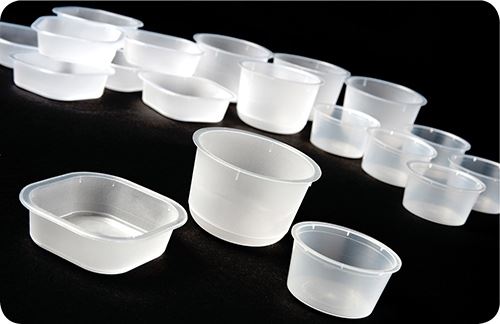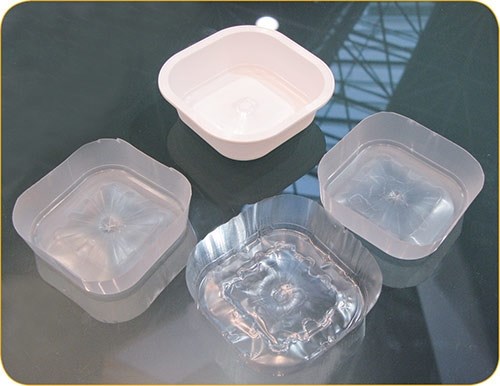Multi-Layer Injection Molded Tubs Take on Thermoforming & Metal Cans
Kortec Inc., Ipswich, Mass., a supplier of multi-layer injection molding technology, is launching an altogether new system for making rigid barrier containers.
Kortec Inc., Ipswich, Mass., a supplier of multi-layer injection molding technology, is launching an altogether new system for making rigid barrier containers. Kortec (kortec.com), whose proprietary expertise is in multi-channel injection nozzles and tooling that produce a layered structure, is advancing beyond its core business in barrier PET bottle preform systems for stretch-blow molding. It is entering new territory with polypropylene instead of PET as the structural material, and is moving beyond preforms to direct injection of wide-mouth containers such as round or square cups or tubs.
A typical structure would be three layers of PP/EVOH/PP. Initial applications will be single-serve portion packs for fruits, vegetables, and pet foods. Kortec makes the special tooling and supplies complete turnkey molding systems for multi-layer products. The first commercial system—with 32 cavities for pet-food containers—was due to start up last month at a customer in Europe.
According to Russell Bennett, Kortec vp of sales and marketing, the three-layer PP tubs can provide up to two-year shelf life and are hot-fillable and retortable, all of which makes them competitive with metal cans. While steel cans are very close in cost to the injection molded barrier tubs, aluminum cans (common for packaging fish) are almost three times more expensive, Bennett says. His firm’s barrier containers can take a heat-sealed aluminum-foil lid or a steel can end. In-mold labeling is another possibility.
BEATS THERMOFORMING
Bennett claims that filling and sealing lines with the new injection molded containers could run 15% faster than with thermoformed containers. He explains that molded tubs have flatter and more uniform flanges as well as more uniform dimensions.
Related Content
-
In Sustainable Packaging, the Word is ‘Monomaterial’
In both flexible and rigid packaging, the trend is to replace multimaterial laminates, coextrusions and “composites” with single-material structures, usually based on PE or PP. Nonpackaging applications are following suit.
-
Foam-Core Multilayer Blow Molding: How It’s Done
Learn here how to take advantage of new lightweighting and recycle utilization opportunities in consumer packaging, thanks to a collaboration of leaders in microcellular foaming and multilayer head design.
-
Pregis Performance Flexibles: In the ‘Wow’ Business
Pregis went big and bold with investment in a brand-new, state-of-the-art plant and spent big on expanding an existing facility. High-tech lines, well-known leadership and a commitment to sustainability are bringing the “wow” factor to blown film.


















